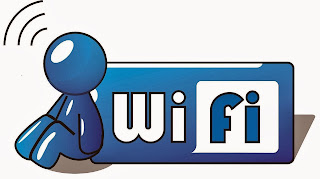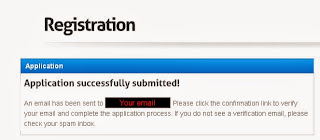How to create bootable USB drive in Windows
A common use of a bootable USB flash drive is to use it for booting into Windows. This can allow you to perform diagnostic on a computer that has hardware issues or can't boot into Windows. You can also use the flash drive to install windows instead of using the Windows installation CD.
This guide will outline making a bootable USB flash drive with Windows XP, Vista, and 7. Before we begin, it's important to note that the computer you want to use your bootable USB drive in will need to have the capability of booting to a USB drive. Most recent computers built since Windows Vista was released are capable of booting to a USB devices. Prior to the Windows Vista timeframe, it's hit or miss with motherboards.
To determine if a computer is capable of booting to a USB device, access the computer's BIOS and check the bootable device list. If a USB device is listed, set the USB drive to be the first boot device. If you do not see a USB device in the list of bootable devices, your BIOS is not capable of booting to aUSB device. (NOTE: You may need to have your USB flash drive plugged in when you access the BIOS).
Windows Vista and windows 7 Users.
To make the bootable USB drive for Windows Vista or Windows 7, you need to have Windows Vista or 7 installed on your computer. It is recommended that you have a flash drive of at least 4 GB in size, in order to store all the necessary files.
Note: Before you start, plug in the USB drive and backup any files you have stored on the USB drive. The drive will be formatted during this process and all files on it will be deleted.
Tip: You will need a Windows Vista or Windows 7 disc for these instructions to be successful.
1. Open an elevated Windows command line window by clicking Start, typing in cmd in the search text field, then pressing CTRL + Shift + Enter on your keyboard (at the same time). You can also access this by navigating to start, All Programs, Accessories, right-click with your mouse on the Command Prompt menu item and select Run as Administrator.
2. At the command prompt, type cd c:\windows\system32 to change the directory to the Windows system32 directory. Ensure your USB drive is plugged in and type DISKPART and press Enter. Then type LIST DISK and press Enter.
3. You will see a listing of the disk drives connected to your computer. Find the disk number of your USB drive and type SELECT DISK [USB disk #], where "[USB disk #]" is the disk # for your USB drive. It should now state that your USB drive is the selected disk. If you're not sure what disk is the USB disk, eject the USB drive, perform step number 2 again, connect the USB drive again, and compare the results. Usually the USB drive will be the last drive.
4. Type in the following commands, one by one, pressing Enter after each command.
Keep the command prompt window open, but you can minimize it for a little bit.
5. You will now need your Windows Vista or 7 Installation DVD. Put the DVD in your computer's DVD drive. Open up My Computer and note which drive letter is assigned to your DVD Drive and your USBflash drive.
6. Go back to the command prompt window and type in D: CD BOOT (substitute your DVD drive letter for "D:" if necessary) and press Enter. Type CD BOOT again and press Enter. Lastly, type BOOTSECT.EXE /NT60 H: (substitute your USB flash drive letter for "H:" if necessary) and press Enter.
7. The last step is to copy the entire contents of the Windows DVD to your USB flash drive.
Your USB flash drive is now set up to be a bootable USB drive for Windows Vista or 7.
Windows XP Users.
To make the bootable USB drive for Windows XP, it is recommended that you have a flash drive of at least 4 GB in size, in order to store all the necessary files. You will also need to download windows Server 2003 SP1 and a program called PE Builder (also known as Bart PE).
Before you start, plug in the USB drive and backup any files you have stored on the USB drive, to ensure you do not lose any of them.
1. Install PE Builder on your computer. For the sake of ease, install the program to a C:\PEBuilder folder. After you've installed PE Builder, create a folder titled SRSP1 in the PEBuilder folder.
2. Now you need to extract two files from Windows Server 2003 SP1. The filename is quite long, so it is recommended that you rename the file to something shorter, like WS-SP1.exe. Open a command prompt (Start > Run, type cmd and press Enter) and use the cd command to change to the folder where you downloaded the Windows Server 2003 SP1 file to (i.e. cd c:\downloads to change to the c:\downloads folder). Then, type WS-SP1.exe -x to extract the files. A window will open, asking where to extract the files. You can enter the same folder where the file was downloaded.
3. A new folder titled i386 will be created by the extraction process. Type cd i386 to change to that folder. You now need to copy the setupldr.bin file to the SRSP1 folder you created in the PE Builder folder. Type copy setupldr.bin c:\PEBuilder\SRSP1 to copy the file.
4. You also need to expand the ramdisk.sys file to the SRSP1 folder. Type expand -r ramdisk.sy_ c:\PEBuilder\SRSP1
5. Open My Computer and navigate to the c:\PEBuilder\SRSP1 folder and verify the two files are there.
6. Next, you need to create a compressed version of Windows XP using PE Builder. Make sure you Windows XP Professional CD is in your computer's CD drive, then launch the PE Builder program. In the Source field, type in the drive letter assigned to your CD Drive (you can check in My Computer if you are not sure) (e.g. "d:"). In the Output field, type BartPE. Make sure the None option is selected in the Media output section. Then click the Build button

A progress report will be displayed, showing the progress of the bootable image build. When the build process is complete, click the Close button.
7. Now, you can create the bootable USB flash drive. Open a command prompt again and type cd c:\PEBuilder to change to the PEBuilder folder. Make sure your USB drive is plugged in to your computer and type pe2usb -f e: (change "e:" to the drive letter assigned to your USB flash drive, if necessary) to create the bootable drive. You will be prompted to type YES to begin the process. When the process is complete, press any key to exit the program.
Your USB flash drive is now set up to be a bootable USB drive for Windows XP using the Bart PE interface.
Still Can't Fix?
Get More Help for information about contacting us on social networks or via email, posting on Facebook, and more. Be sure to include error or STOP code of the problem you're getting, if you know it.












